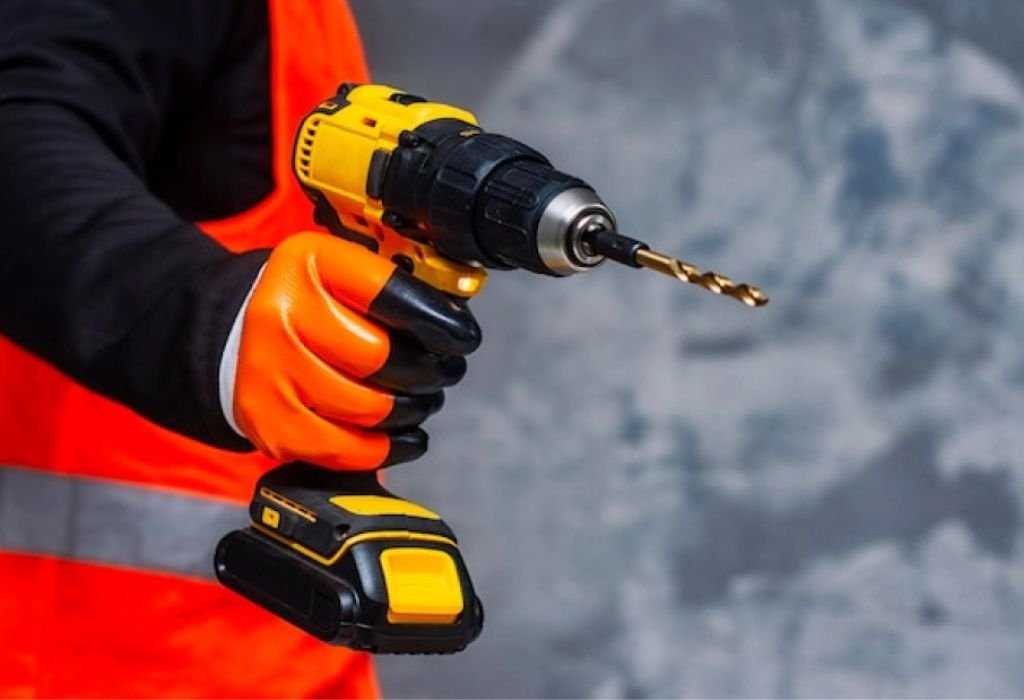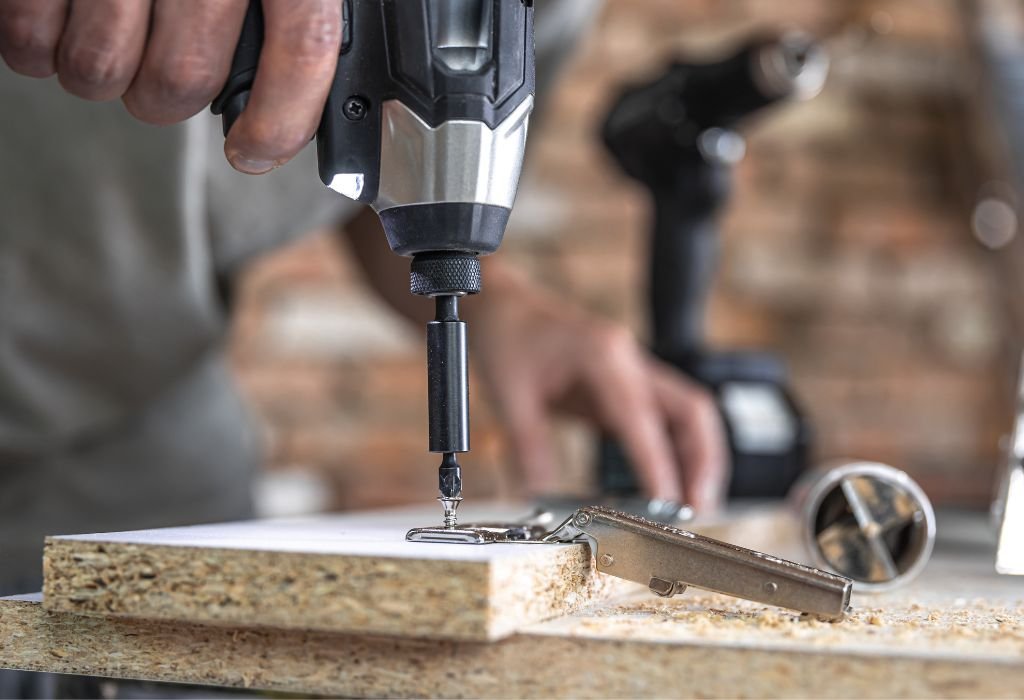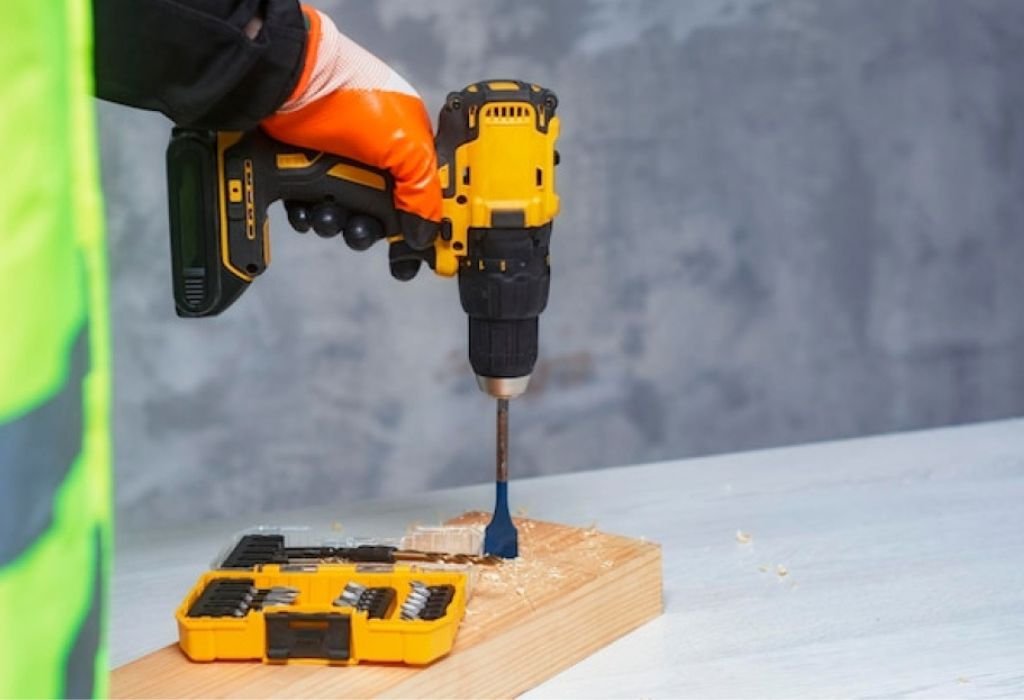A homeowner begins a deck project with a standard drill, only to find screws slipping, bits camming out, and wrists aching from sudden torque.
Frustration builds as the simple task takes twice as long as expected.
Enter the impact driver, a compact tool designed to handle stubborn fasteners with ease.
With every burst of concussive force, it powers through screws that would stall a regular drill.
Curiosity often arises: what is the benefit of an impact driver compared to a drill?
The difference lies in speed, torque delivery, and reduced strain on the user.
According to Pro Tool Reviews, an impact driver delivers up to three times more torque than a standard drill when driving large fasteners source.
This added force makes it ideal for long screws, lag bolts, and construction-grade projects.
The benefits extend beyond power. Tests by The Spruce note that impact drivers significantly reduce cam-out and screw stripping, saving both time and materials source.
This feature alone prevents costly rework on large builds.
The compact design also makes the tool easier to maneuver in tight spaces, while the hammering action reduces wrist fatigue.
For professionals and DIYers alike, these advantages transform frustrating tasks into efficient, controlled work.
This guide explores all the key benefits of an impact driver, from torque and efficiency to safety and convenience.
By the end, the advantages of choosing this tool will be clear for anyone tackling fastener-heavy projects.
Impact Driver Basics: How It Works and Why It Feels Easier

An impact driver uses a concussive, hammer-like mechanism that delivers bursts of rotational force. This system creates higher torque compared to a regular drill, especially when fasteners resist.
Instead of continuous rotation, the tool engages pulses of power that keep the bit seated firmly in the screw head. This reduces slipping and prevents the driver from stalling under heavy load.
Most impact drivers use a 1/4-inch hex collet for quick-change bits. This design allows faster swapping of accessories and provides a more secure grip on impact-rated bits.
Because of this mechanism, what is the benefit of an impact driver becomes clear—it delivers more torque with less user strain. The hammering action absorbs resistance, meaning less wrist twist for the operator.
What makes an impact driver different from a drill?
A drill provides constant rotation, while an impact driver adds hammer-like bursts of torque when resistance increases.
Why a hex collet?
The 1/4-inch hex collet ensures quick bit changes and a firm hold on hex-shank bits.
Does it actually reduce wrist twist?
Yes, the hammering mechanism transfers torque through impacts rather than directly to the wrist.
Can it work with standard drill bits?
Only if the bits have a hex shank; round-shank bits are incompatible.
Why does it feel more powerful on tough screws?
The concussive action multiplies torque output, making long screws and bolts easier to drive.
Core Benefits in Real Work
1) Higher Torque for Tough Fasteners
Impact drivers excel at driving long screws, lag bolts, and structural fasteners into dense materials. The concussive action provides torque far beyond what a drill can sustain.
Will it drive lag bolts better than a drill?
Yes, the added torque makes it ideal for lag bolts and heavy-duty screws.
Can it loosen stuck fasteners?
Often yes, because the pulsing torque helps break bonds and rust.
Why does torque matter in construction?
High torque ensures screws seat fully and securely in dense wood or metal.
Do larger batteries increase torque?
They improve runtime, but torque comes mainly from the mechanism and motor.
Is an impact driver overkill for small screws?
Yes, its power can overtighten or break delicate fasteners.
2) Fewer Stripped Screws and Less Cam-Out
Cam-out occurs when a bit slips from a screw head, damaging both. Impact drivers minimize this by keeping pressure steady through impacts.
Why are screws less likely to strip?
The hammering force keeps the bit engaged even under high resistance.
Do impact-rated bits help prevent stripping?
Yes, they are designed to withstand repeated shocks without breaking.
Is this benefit noticeable on soft wood?
Yes, even light projects see fewer stripped screw heads.
Does it save money on bits?
Yes, fewer broken bits and wasted screws reduce material costs.
Can it work with Phillips, Torx, and square heads?
Yes, as long as impact-rated bits match the screw type.
3) Speed and Efficiency for Repetitive Driving
An impact driver drives screws faster than a drill, especially in repetitive tasks like decking or framing. Quick-change hex collets further speed workflow.
Is it faster than a drill?
Yes, especially on long or heavy-duty screws.
How does speed improve efficiency?
Faster driving reduces time per screw, saving hours on large projects.
Does the compact size help with speed?
Yes, smaller form makes it easier to work in tight spots without slowing down.
Will battery life keep up?
Brushless motors improve efficiency, helping maintain longer runtime.
Is the difference noticeable on a small project?
Yes, even small tasks feel smoother and faster with an impact driver.
4) Less User Fatigue and Wrist Strain
The impact mechanism reduces the torque transferred to the wrist. This makes long driving sessions easier and less tiring.
Why does it feel easier to use?
Impacts absorb resistance rather than passing it to the operator’s arm.
Does it prevent wrist injuries?
It reduces strain, making repetitive fastening safer for joints.
Can beginners handle it comfortably?
Yes, the reduced kickback makes it user-friendly.
Is it lighter than a drill?
Most impact drivers are smaller and lighter, reducing arm fatigue.
Does the hammering feel rough?
It sounds louder but feels smoother in control.
5) Compact Form Factor in Tight Spaces
Impact drivers are shorter and slimmer than drills, making them easier to use in corners, overhead, or between studs.
Why are they more compact?
The design focuses on torque delivery, not large gearing.
Does compact size reduce power?
No, smaller frames still deliver high torque.
Are they easier for overhead work?
Yes, lighter weight reduces strain when working above the head.
Can it reach into cabinetry and corners?
Yes, shorter head length makes tight-space fastening easier.
Do pros prefer compact models?
Yes, portability and control are valued on job sites.
Typical Use Cases (And When Not to Use One)
Impact drivers shine in deck building, framing, cabinet installation, and lag screw driving. They also help in light automotive tasks with socket adapters.
Can it drill holes?
Yes, but only with hex-shank drill bits.
Should it replace a drill?
No, a drill is still needed for precision drilling.
Is it good for brittle materials?
No, a drill with clutch control is safer.
Can it replace a hammer drill for masonry?
No, hammer drills are designed for concrete and masonry.
Is it useful in furniture assembly?
Yes, but use caution with small screws to avoid overtightening.
Impact Driver vs Drill: Benefits Trade-Offs
Impact drivers excel in torque and speed, while drills win in versatility and precision. Many professionals use both for efficiency.
Which should beginners buy first?
A drill for versatility, then add an impact driver for fastening.
Why does the drill’s clutch matter?
It controls torque, preventing damage in delicate work.
Are combo kits worth it?
Yes, owning both tools covers nearly all fastening and drilling needs.
Can an impact driver drill holes like a drill?
Only with hex-shank bits, not round-shank bits.
Do pros still carry both tools?
Yes, each has advantages that complement the other.
Key Features That Maximize the Benefits

Modern impact drivers include brushless motors, multiple speed settings, and assist modes. These features optimize torque, runtime, and control.
Does brushless matter?
Yes, it increases efficiency and extends battery life.
What do speed modes do?
They adjust RPM and impact force for different tasks.
Why impact-rated bits?
They withstand shocks without snapping.
Are compact models strong enough?
Yes, most handle heavy-duty screws easily.
Is variable speed important?
Yes, it gives more control over screw depth.
Common Mistakes and How to Avoid Them
Users sometimes misuse impact drivers by forcing them like drills or using non-impact-rated bits. Proper technique ensures longevity and safety.
Why not use it for all drilling?
Drills offer better precision for holes.
Do I still need pilot holes?
Yes, especially for hardwood or large screws.
Why use impact-rated bits?
Standard bits may break under repeated shocks.
Can overtightening be a problem?
Yes, always stop when the screw seats.
Is hearing protection necessary?
Yes, impact drivers are louder than drills.
Light Automotive and Shop Benefits (With Adapters)
Impact drivers can handle light automotive fasteners when paired with socket adapters, but not heavy-duty applications.
Can it remove lug nuts?
No, an impact wrench is required for that.
Is it safe for engine work?
Only for light fasteners, not critical torque bolts.
Are socket adapters reliable?
Yes, but only impact-rated versions.
Does it save time in assembly?
Yes, for small fasteners and brackets.
Is it common in auto shops?
Yes, for light-duty fastening alongside larger wrenches.
Noise, Bits, and Safety Considerations
Impact drivers are louder than drills, so hearing protection is recommended. Always use impact-rated bits for safety.
Why is it noisier than a drill?
The internal hammering creates sharp sound bursts.
Do standard bits work?
They can, but risk breaking under impacts.
Should gloves be worn?
Yes, they provide grip and reduce vibration.
Are sparks a risk?
Brushless models reduce sparking compared to brushed motors.
Is eye protection necessary?
Yes, to prevent debris from causing injury.
Buying Tips: Get the Benefits You Paid For

Choose an impact driver with brushless technology, multiple speed settings, and a compact size. Kits with batteries and impact-rated bits add value.
Are compact models powerful enough?
Yes, they balance portability and torque.
Should I buy a kit or bare tool?
A kit with batteries is better for first-time buyers.
Do all brands make reliable drivers?
Major tool brands offer solid impact driver models.
Is a higher torque rating always better?
Not always; balance torque with control features.
Are warranties important?
Yes, they protect against motor or battery failures.
Conclusion
What is the benefit of an impact driver? It provides high torque, faster fastening, fewer stripped screws, reduced wrist strain, and compact control in tight spaces.
While it cannot fully replace a drill, it is the ultimate tool for driving screws and bolts efficiently. For projects requiring speed and power, the impact driver transforms frustrating tasks into smooth, controlled work.
For anyone building decks, installing cabinets, or handling heavy screws, the benefits are clear: an impact driver is an essential tool for modern projects.

I’m John F. Nicholas, the founder, lead writer, and drill enthusiast behind 101drill.com. With years of hands-on experience in power tools and DIY projects, I created this platform to share practical knowledge, expert tips, and real-world insights to help others master the art of drilling.
